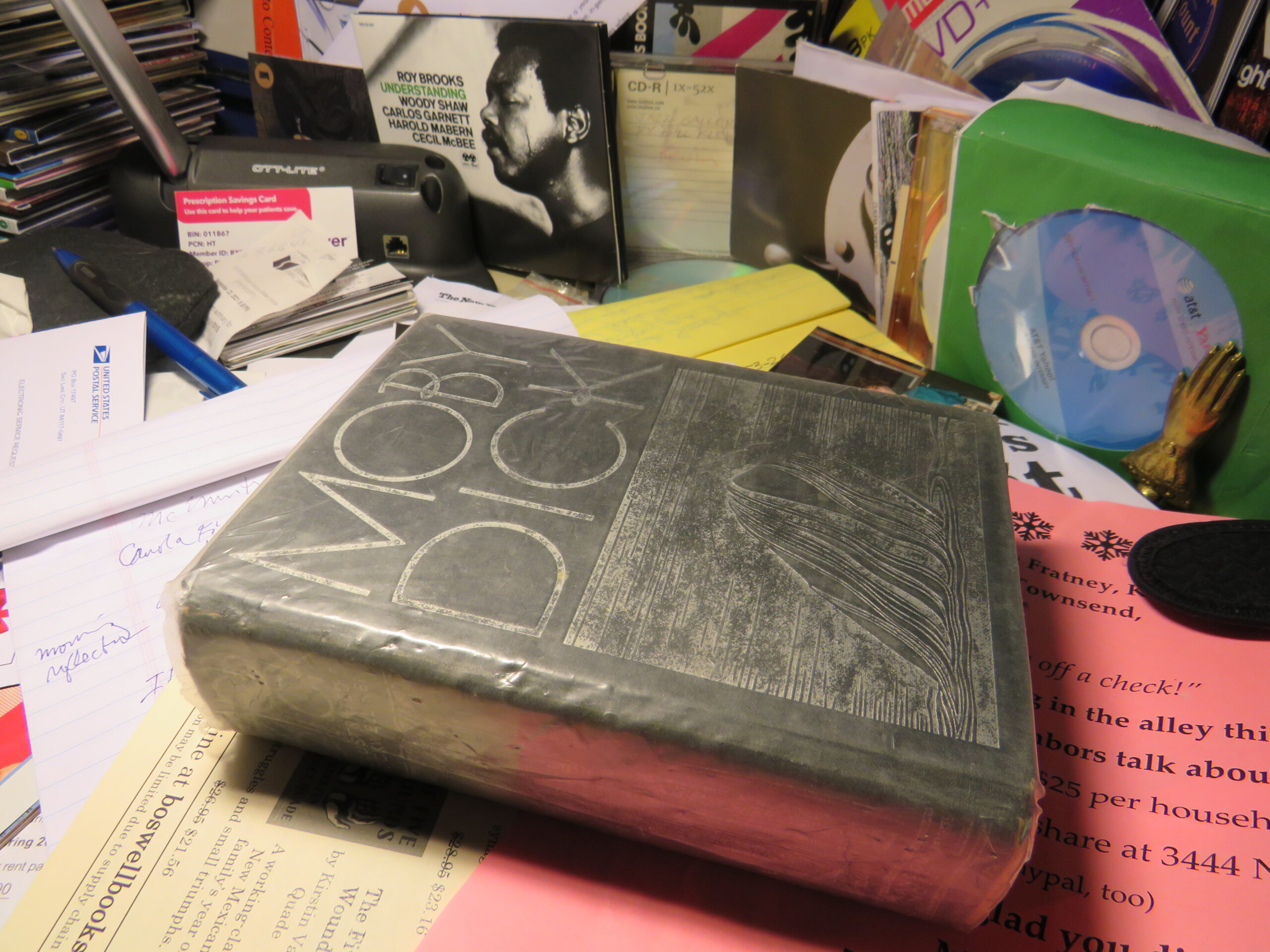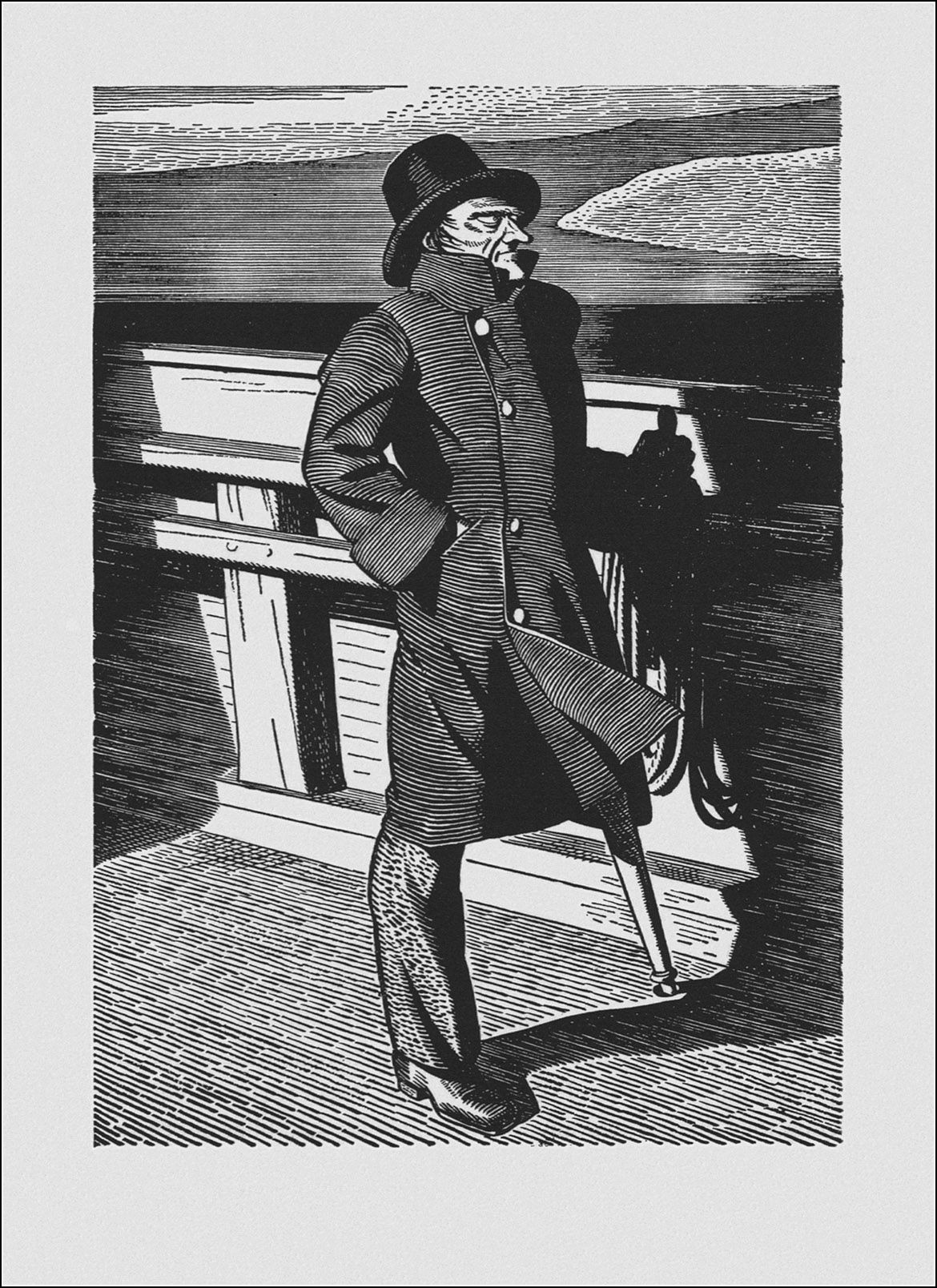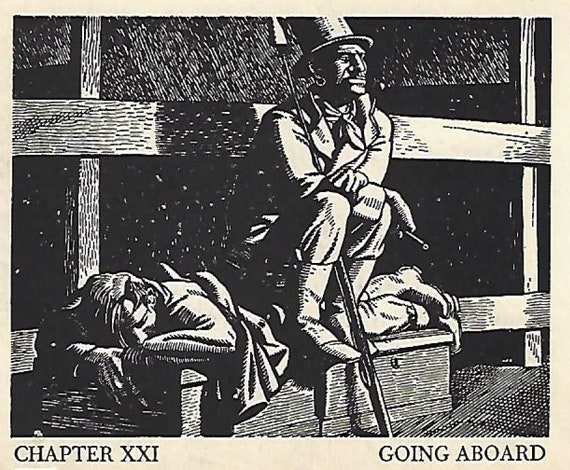
The twin rivers of Two Rivers surround the central city. Courtesy Pinterest.org.
A Trip to Two Rivers, Wisconsin: nature abounds, football glory and the original ice cream sundae
PHOTO ESSAY Part 1 The Lighthouse Inn Embraces the Edge of Lake Michigan.
Two Rivers, Wisconsin, is a Lake Michigan coast community that sits somewhat inauspiciously between Milwaukee and the far-more-desired coastal destination of Door County. But this small city — also always somewhat in the shadow of the larger Manitowoc, about nine miles south — has plenty of charm, beauty, atmosphere, and history.

The West Twin River of Two Rivers. Courtesy two-rivers.org
With a population of 11,700, Two Rivers is largely situated between its nominal two rivers, which creates a virtual island for the central city proper (see photo at top). The lakeside and waterways make for a bountifully green environment (photo above).
The city also holds a natural interest for me, as both my parents grew up there, met, and became high school sweethearts destined to marry. Yet I have too belatedly partook of the city’s allure, after having visited here only once, in the late 1990s, since a family reunion a handful of decades ago, which included the extended families of the four Two Rivers Lynch siblings: My father Norm Lynch (and his wife Sharon, a Two Rivers native), and my uncles Jim and Jack (and his spouse Barbara), and my aunt Eileen.
Travel partner Ann Peterson and I were staying in The Lighthouse Inn, the very place the Lynch families stayed at back then for the reunion. Memories bubbled up as we sat in the hotel’s bar.
A highlight of the reunion for me was when Jack Lynch, our hip California uncle, summoned brother Norm Lynch’s three oldest children — me, Nancy and Maureen — to his hotel room. Then, with a cagey grin, he pulled out a pipe filled with marijuana. We proceeded to get high and float through the rest of the day in a refracted, altered state.:Like, zowsville, man. My mother detected us and determined the cause, and was less than pleased with Jack for “corrupting” her children.

An animated moment at the Lynch family reunion, in the mid-1980s, in the bar of the Lighthouse Inn. From left are my mother, Sharon Lynch (seated), my uncle Jack Lynch (standing in navy and white jacket), my Aunt Eileen Lynch, my sister Sheila Lynch, and Eileen’s old Two Rivers friend Joyce Amman.
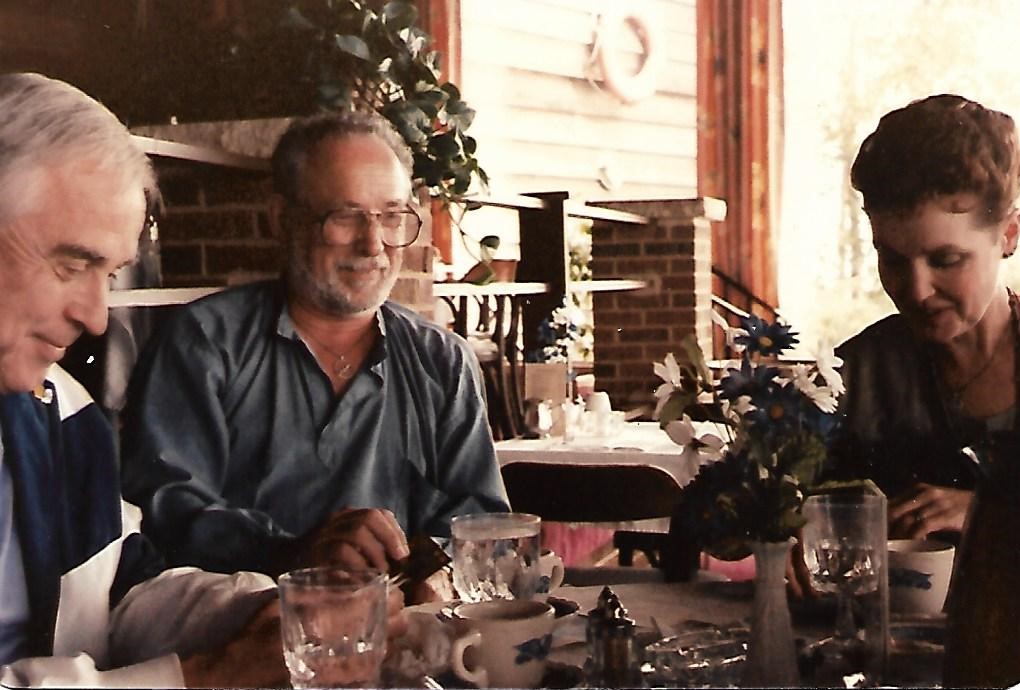
One more of 1980s Lynch family reunion at Lighthouse Inn in Two Rivers. (L-R) Uncle Jack, the surgeon, with Uncle Jim who, after a distinguished career as a Colonel in the Air Force, earned a degree in art and reinvented himself as a visual artist in Seattle. Next to Jim is his second wife, Sherri.
Yet so much time had now passed that all four of the Two Rivers Lynch children, raised by the family matriarch Frances Lynch, have now passed as well.
So, settling in at The Lighthouse Inn, with its reunion memories, I had a slight feeling of bittersweet remorse. The rarity of such reunions derived from the four Lynch children being so scattered: Norm in Milwaukee, Eileen in Austin, Texas; Jack in Sacramento, California and Jim, the oldest and the one with the strongest ties to the family’s original home, in Seattle.

The Lighthouse Inn, on Lake Michigan in Two Rivers. Courtesy trip101
A big part of the history and mythology of Two Rivers for me personally also has to do with my father’s exploits as quarterback of a remarkable high school football team, for The Two Rivers Purple Raiders of Washington High School. From 1943 to 1946-47, the team, also known as “The Golden Air Patrol,” went undefeated 24 consecutive games over the three years my father quarterbacked. However, dad always emphasized to me, it’s very much the story of a talented and dedicated team and a brilliant head coach, Harry O’Mealy (more on that below, in Part 4).
But Ann and I had also wanted to explore the Woodland Dunes Nature Preserve, not far from the hotel.
And the hotel provided quite a romantic vista, with the magnificently setting sun on the horizon accompanying my vague awareness of the shipwrecks that haunt the Two Rivers shoreline. A few years ago, a new monument was erected to commemorate one of the state’s deadliest shipwrecks ever, of The Vernon, in the treacherous waters of Lake Michigan near Two Rivers, on October 28, 1887, coming from Frankfurt, MI. We missed the anniversary by one week, being there on Oct 22-23. But as the photos hopefully show, the Great Lakefront was plenty evocative of whatever the imagination might summon. See feature story link, here, followed by my photos of the lake from The Lighthouse Inn.
https://www.wearegreenbay.com/from-the-local-5-digital-desk/two-rivers-monument-honors-lives-lost-in-one-of-wisconsins-deadliest-shipwrecks/
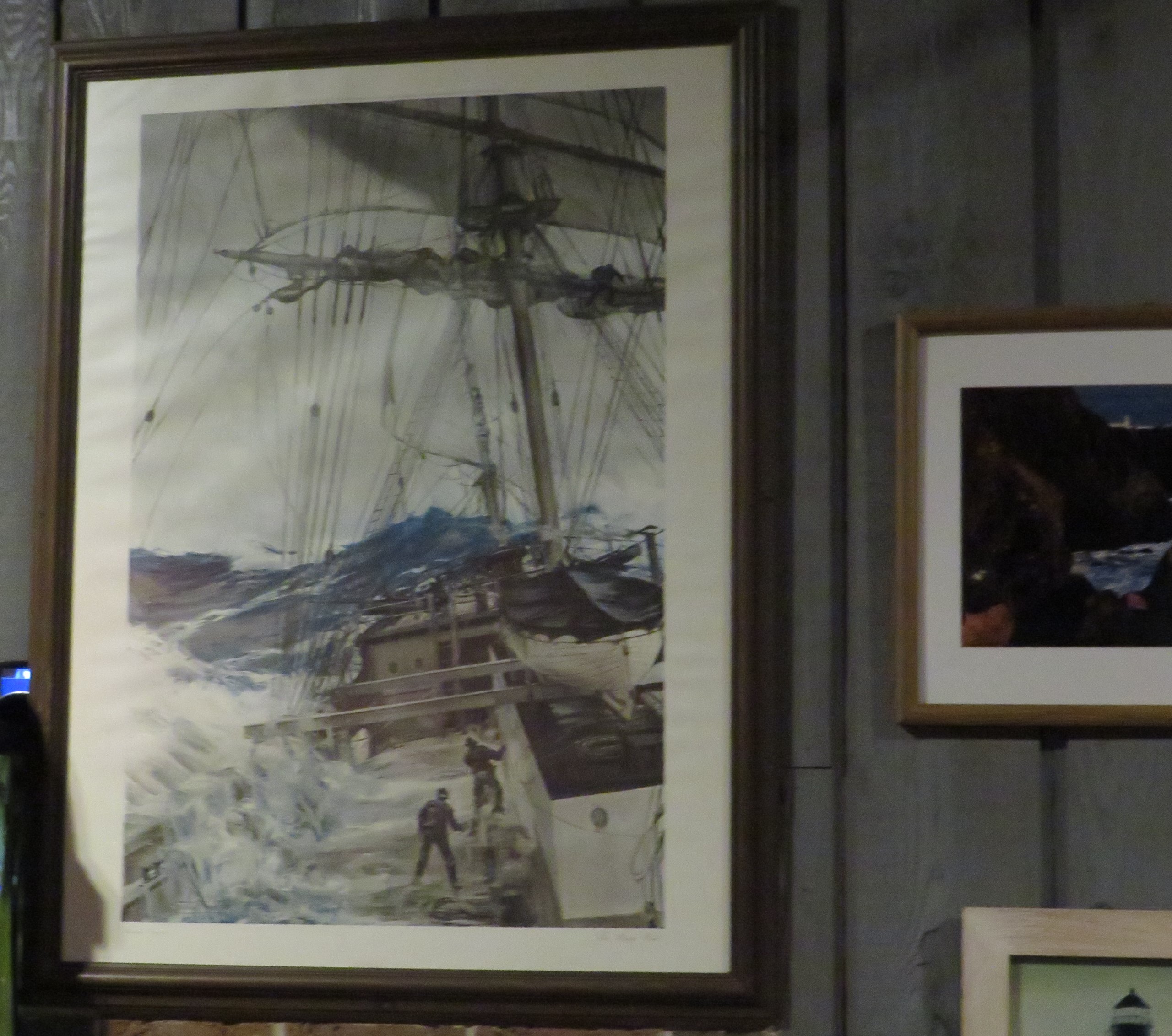
Print of dramatic seafaring scene painting in restaurant of Lighthouse Inn in Two Rivers.

The Lighthouse Inn Bar overlooking Lake Michigan in Two Rivers

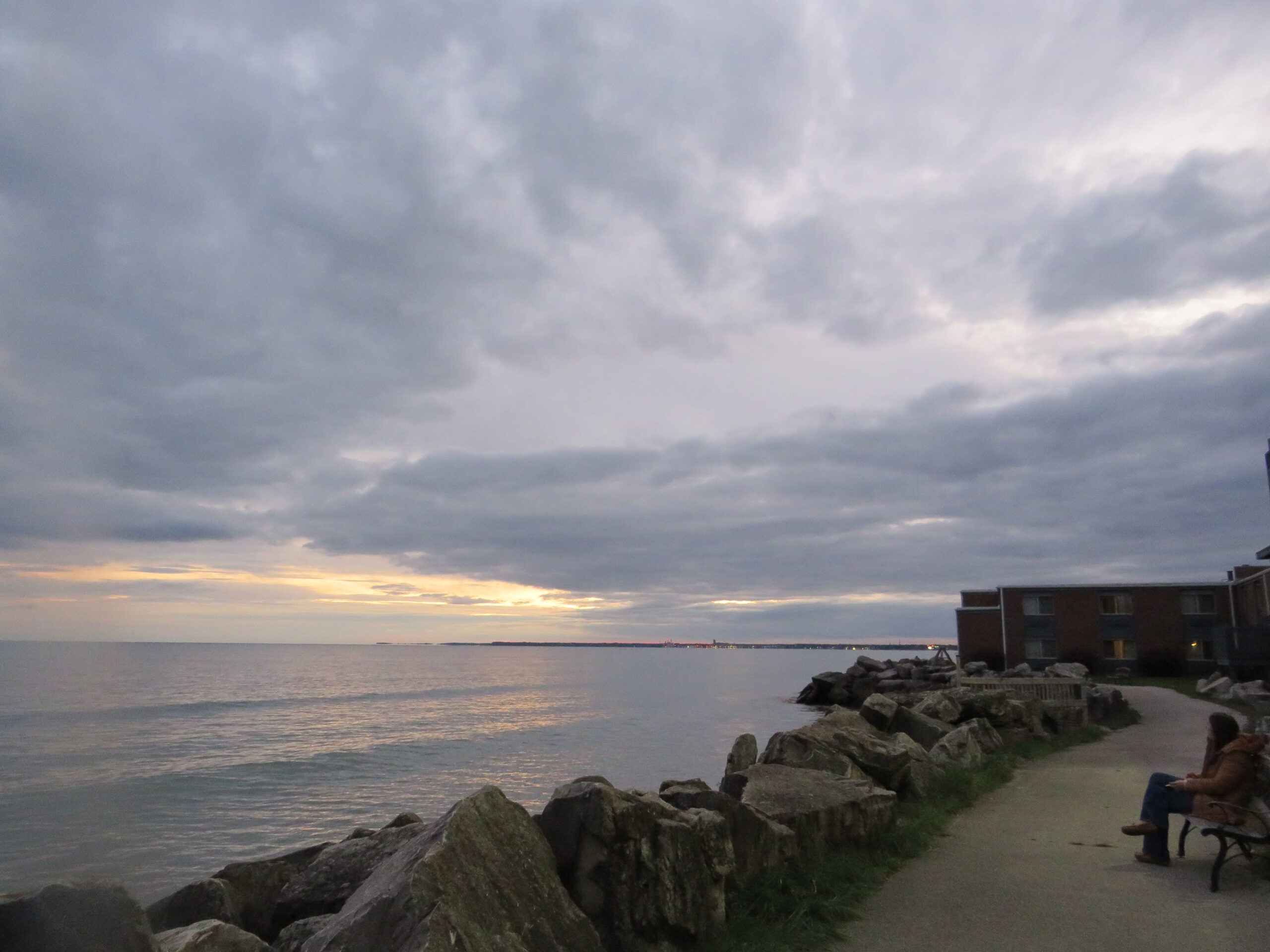
The mutating dusk sky in two views looking south towards Manitowoc (on the distant horizon) from Lighthouse Inn.

Looking north towards the Two Rivers lighthouse on the breakwater, from Lighthouse Inn

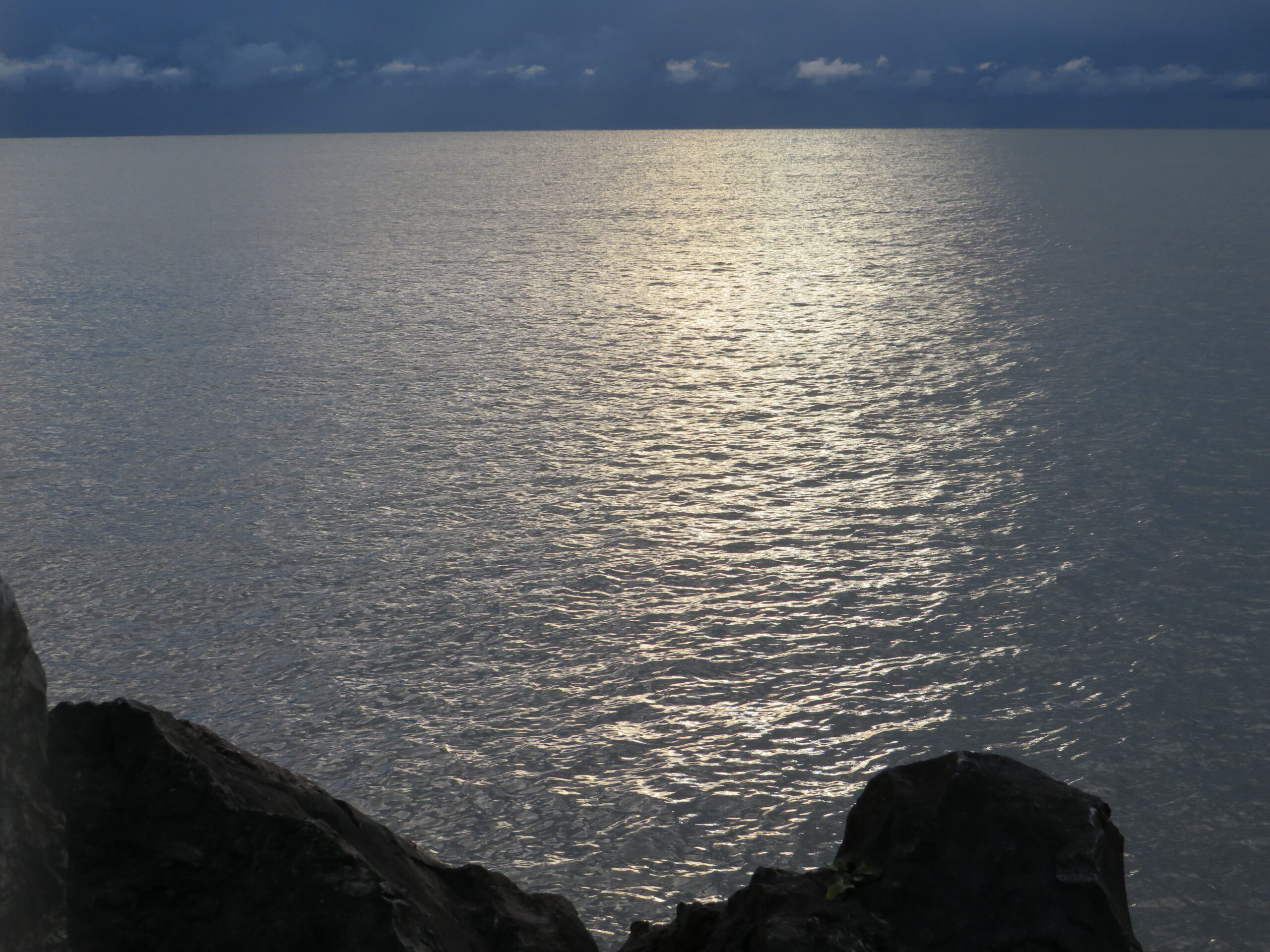
Sunset on Lake Michigan, from The Lighthouse Inn

The next morning, the moon lingered above Two Rivers, not quite ready to let go of its nocturnal domain.
Part 2 — The Woodland Dunes Nature Preserve, in Two Rivers
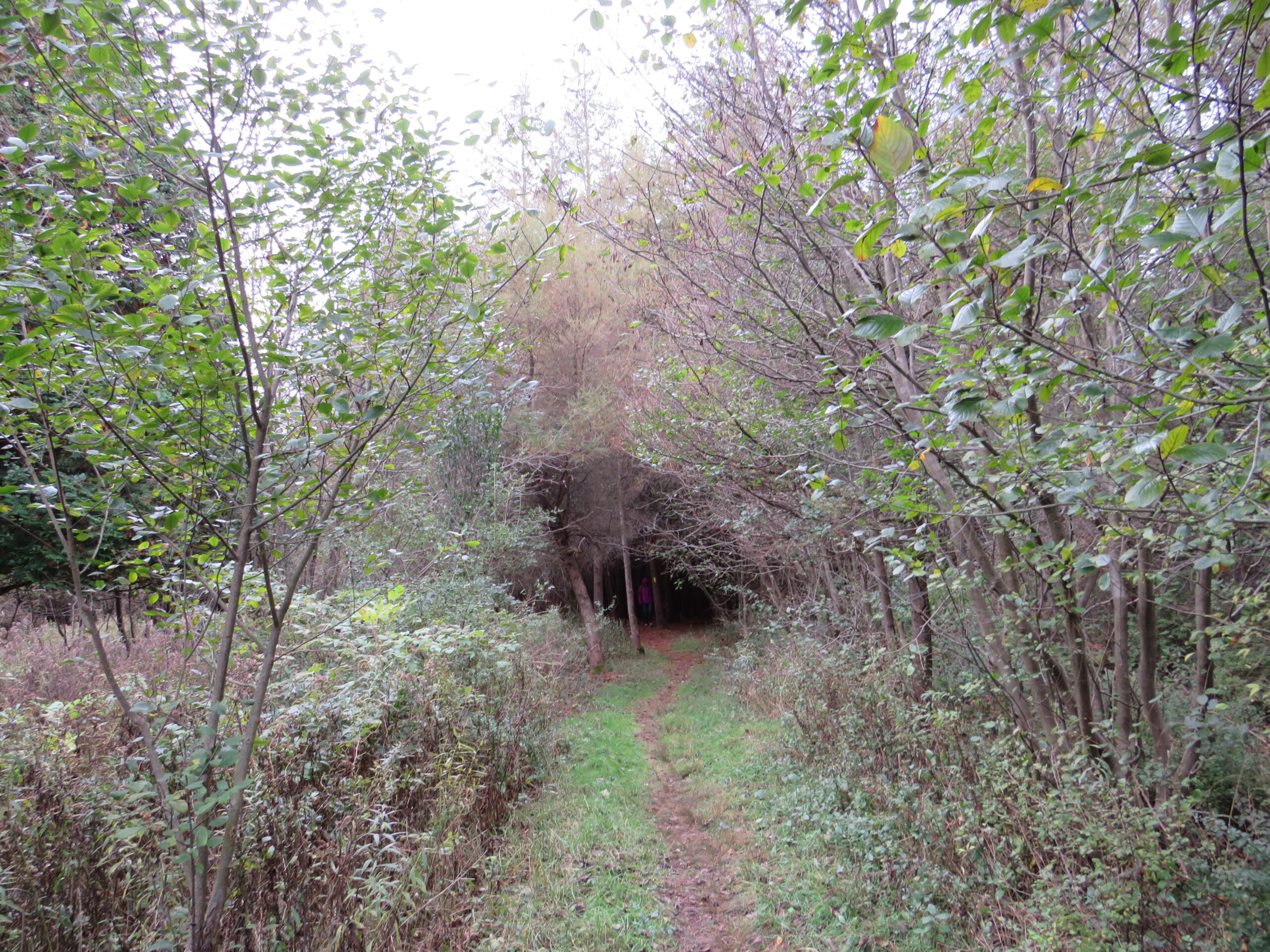
The entrance to the woods of the Woodland Dunes Nature Preserve
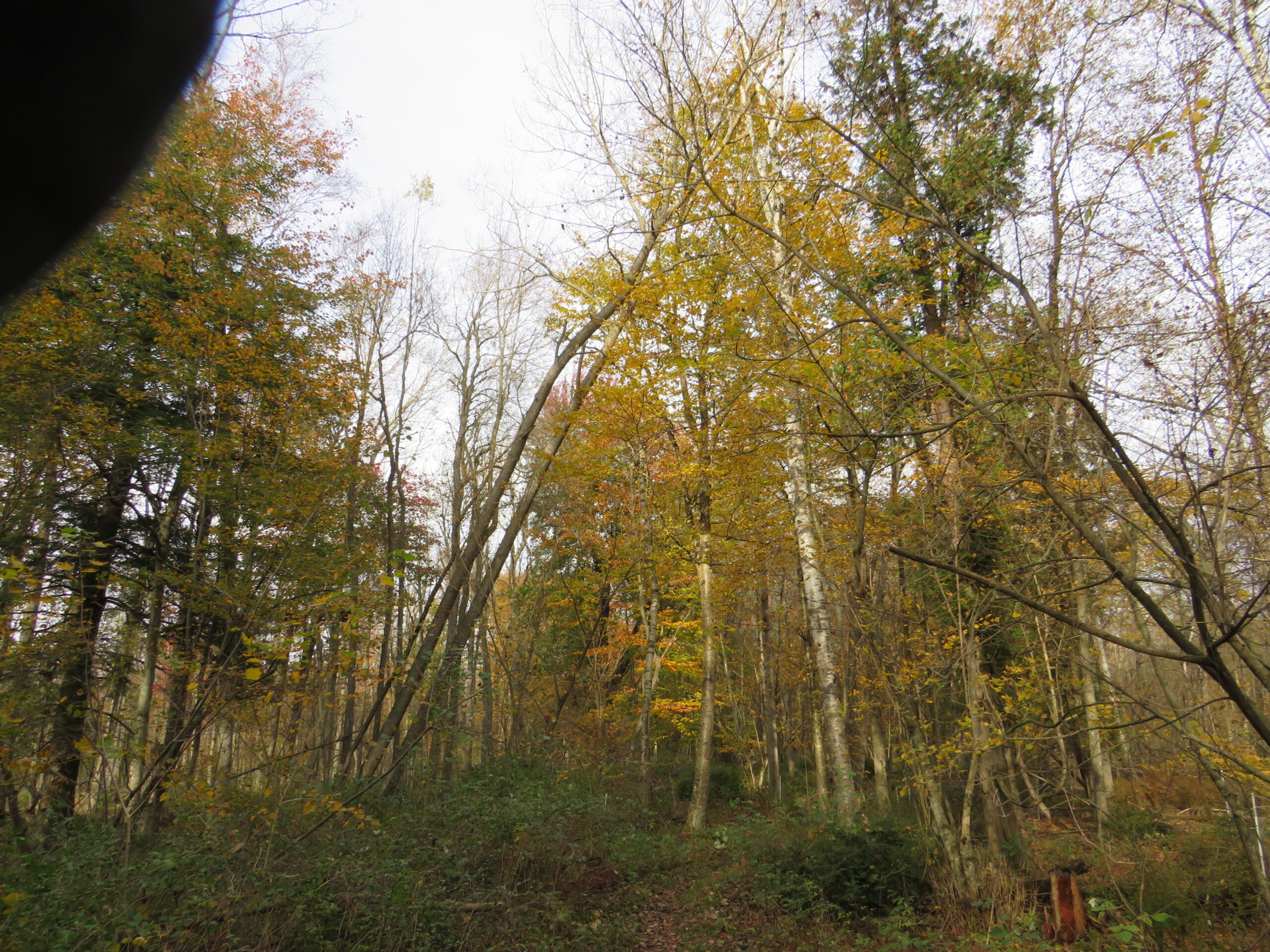


At first, I though maybe this little fella might’ve been “playing possum.” We came back his way later. Sadly, he wasn’t.
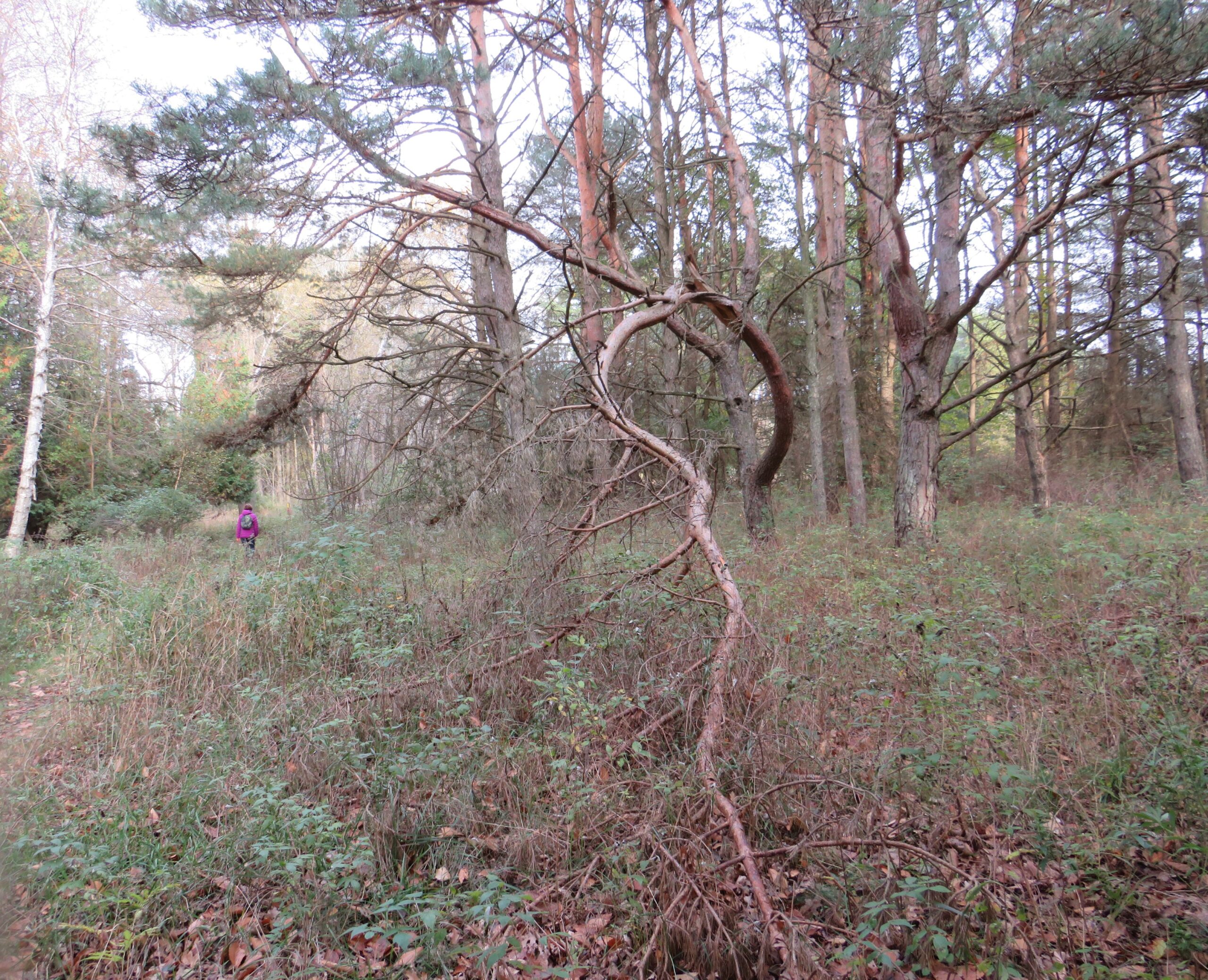
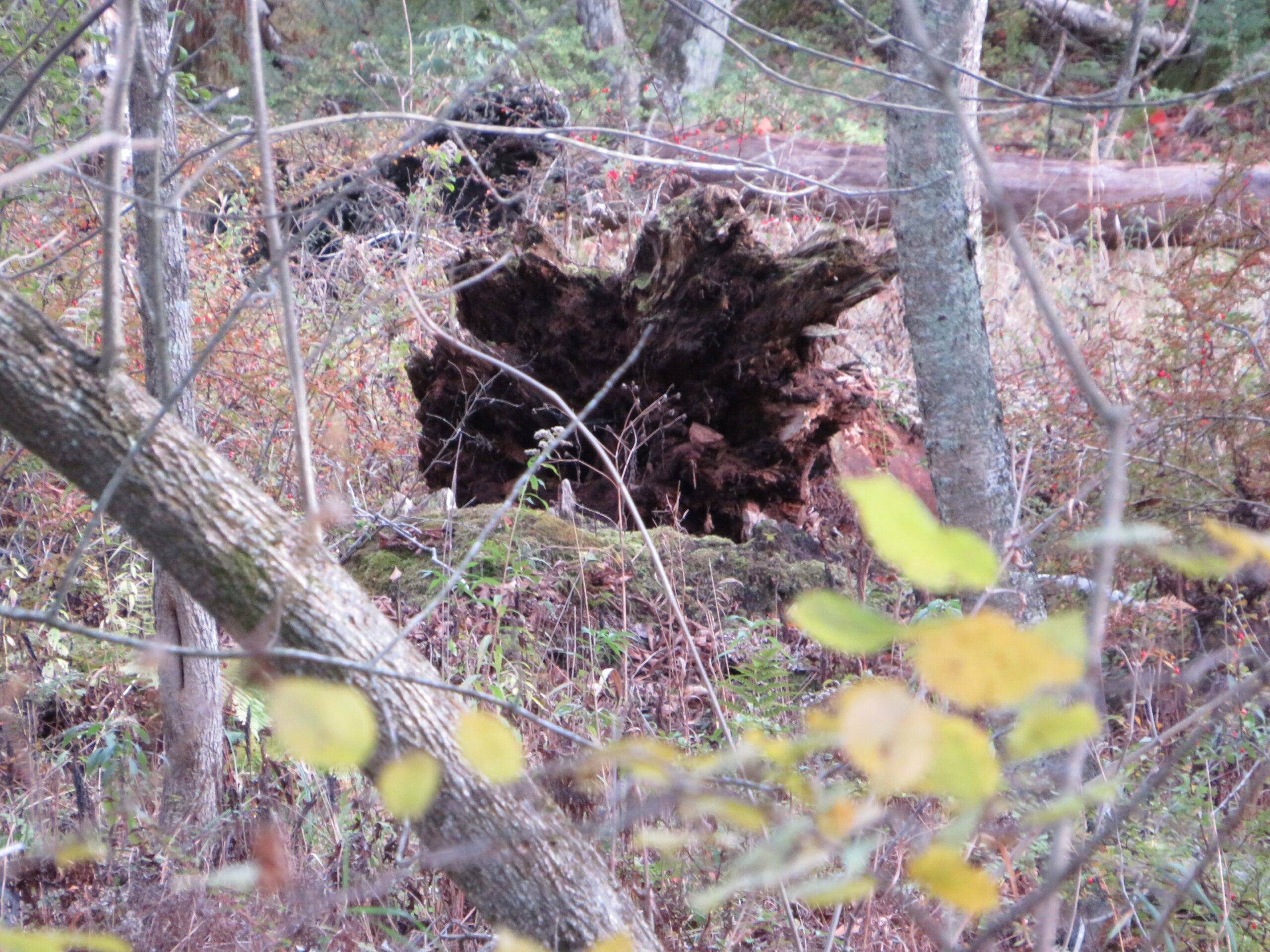
Here’s a rare photo of the semi-mythical Woodlands Pharting Ogre which audibly followed us for a short while on our hike through the preserve


Part 3 — Two Rivers history, including its distinction as the Birthplace of the Ice Cream Sundae.
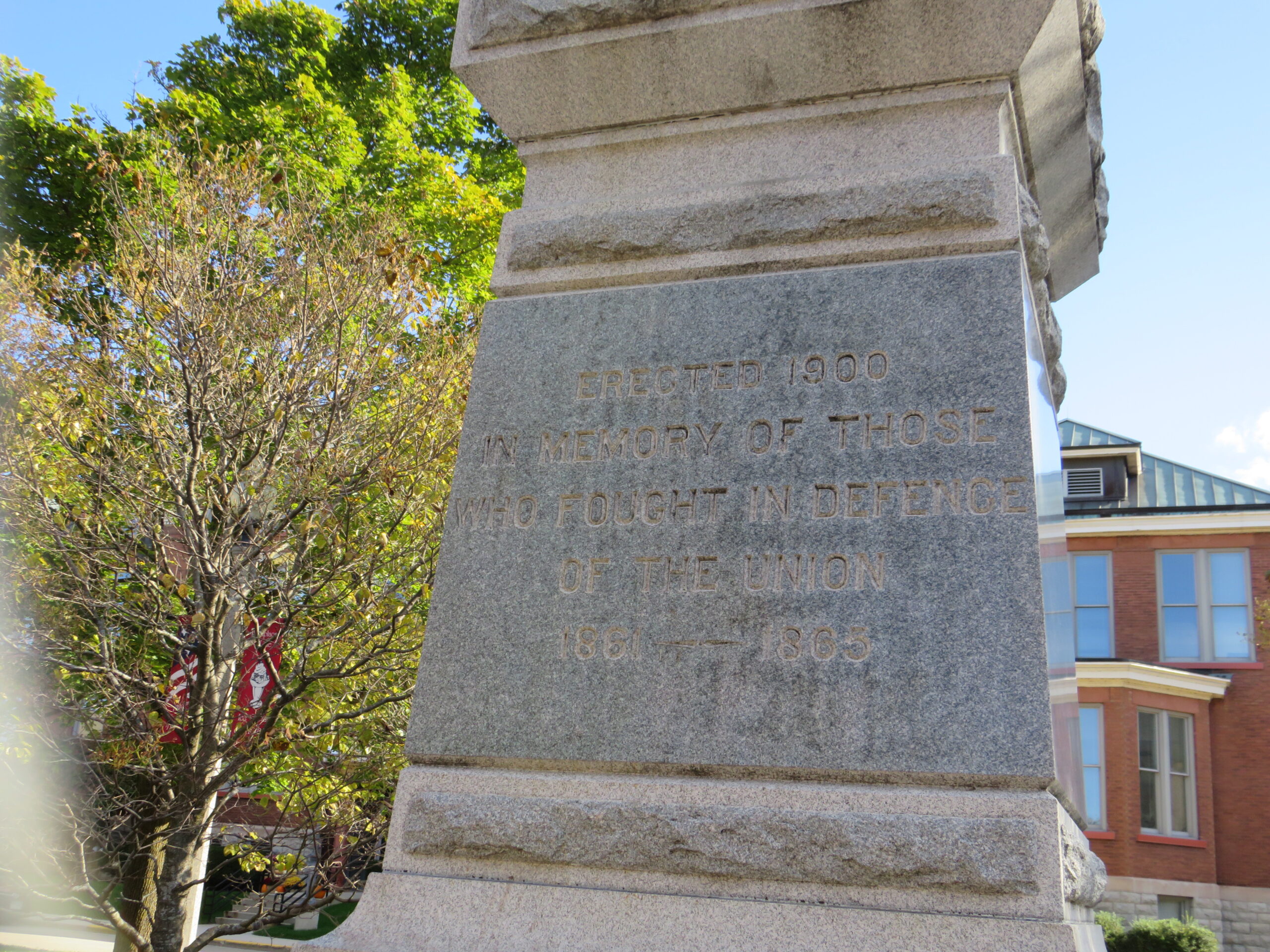
Inscription beneath Civil War soldier statue (below) outside Two Rivers City Hall (formerly Washington High School): “In memory of those who fought in defense of the Union.”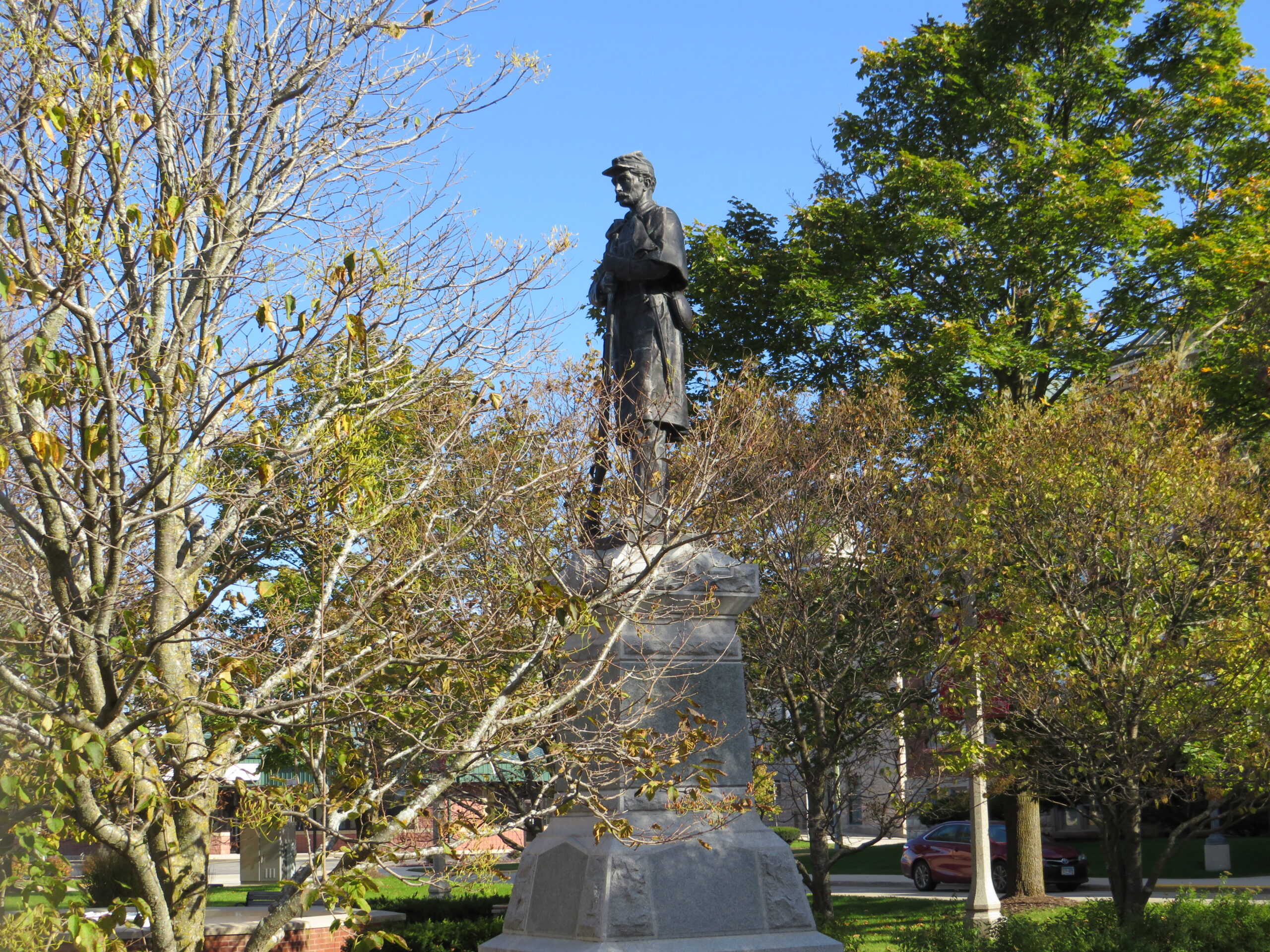

Two Rivers City Hall (formerly the site of Washington High School). The original school was a larger red brick building (since razed) but visible in the yearbook photo below.
And what of the birth of the ice cream sundae? Well worth pondering as National Sundae Day is about to arrive on November 11th. Here’s the lowdown:
“In 1881, George Hallauer asked Ed Berner, owner of a soda fountain (in Two Rivers), to top his dish of ice cream with chocolate sauce, hitherto used only for ice cream sodas. It became a popular concoction, but was only sold on Sundays. One day, a little girl asked for one, saying they could pretend it was Sunday. Voila — sundae (the spelling is attributed to a mistranscription on the check).” 1
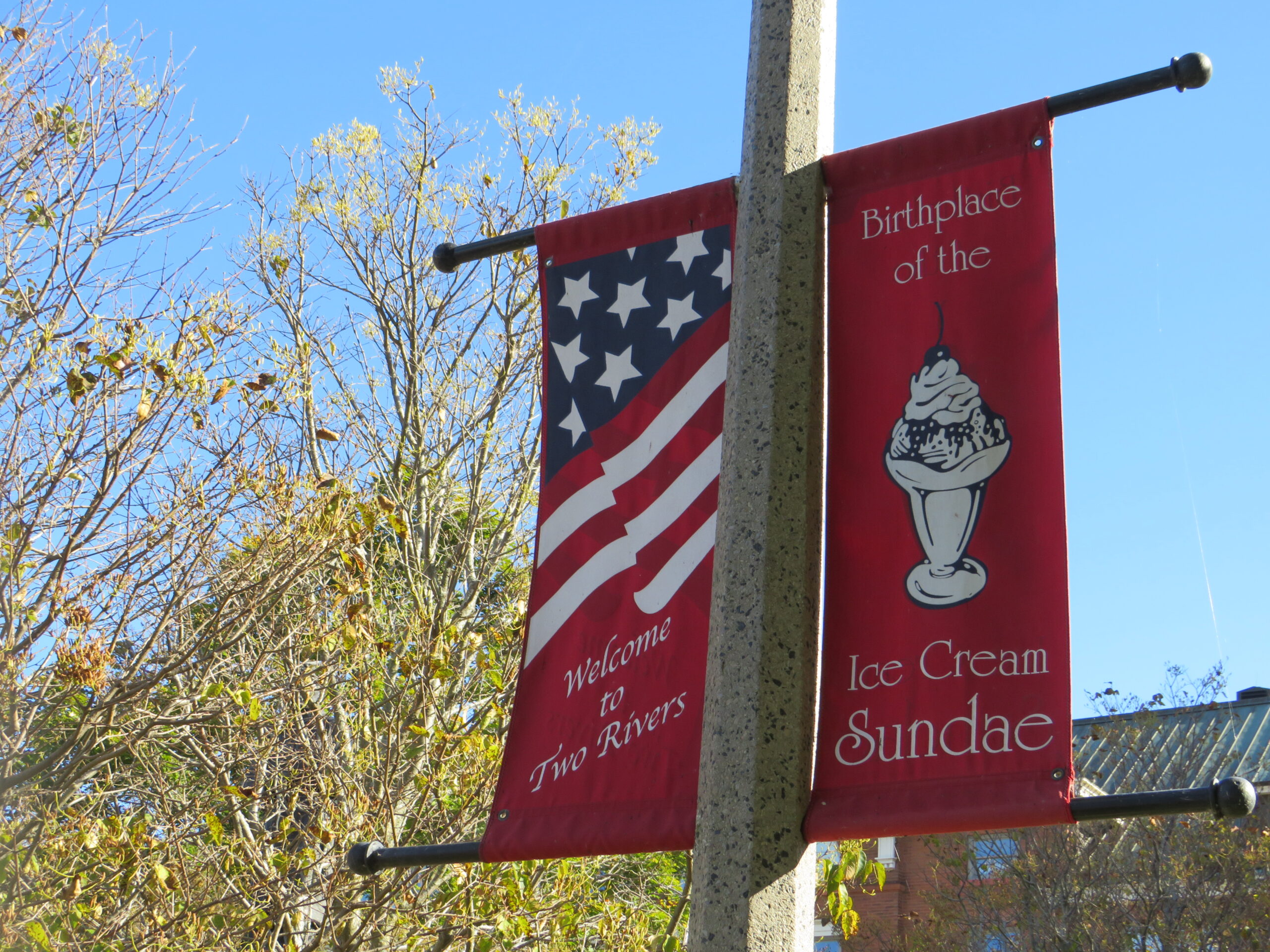

Ann Peterson at the site of Berner’s Ice Cream Parlor, established 1881, the legendary
birthplace of the ice cream sundae, in Two Rivers, Wisconsin. It’s now a museum and ice cream parlor (below).

Part 4 — Gridiron glory of the undefeated Two Rivers Raiders
Evan Gagnon describes the unparalleled era of Two Rivers’ Washington High football coach Harry O’Mealy, in his book Neshota: The Story of Two Rivers, Wisconsin:
” ‘It’s never too late.’
A pat phrase, maybe, but it pretty well sums up the philosophy of Harry O’Mealy, the winningest football coach ever to tear up the turf at two Rivers Washington high school.
“Clever, articulate, highly competitive and always a jump ahead of the opposition, O’Mealy pushed his Golden Air Patrol in about the same fashion that Vince Lombardi drove his Packers and the results on a comparative basis were about the same.” 1
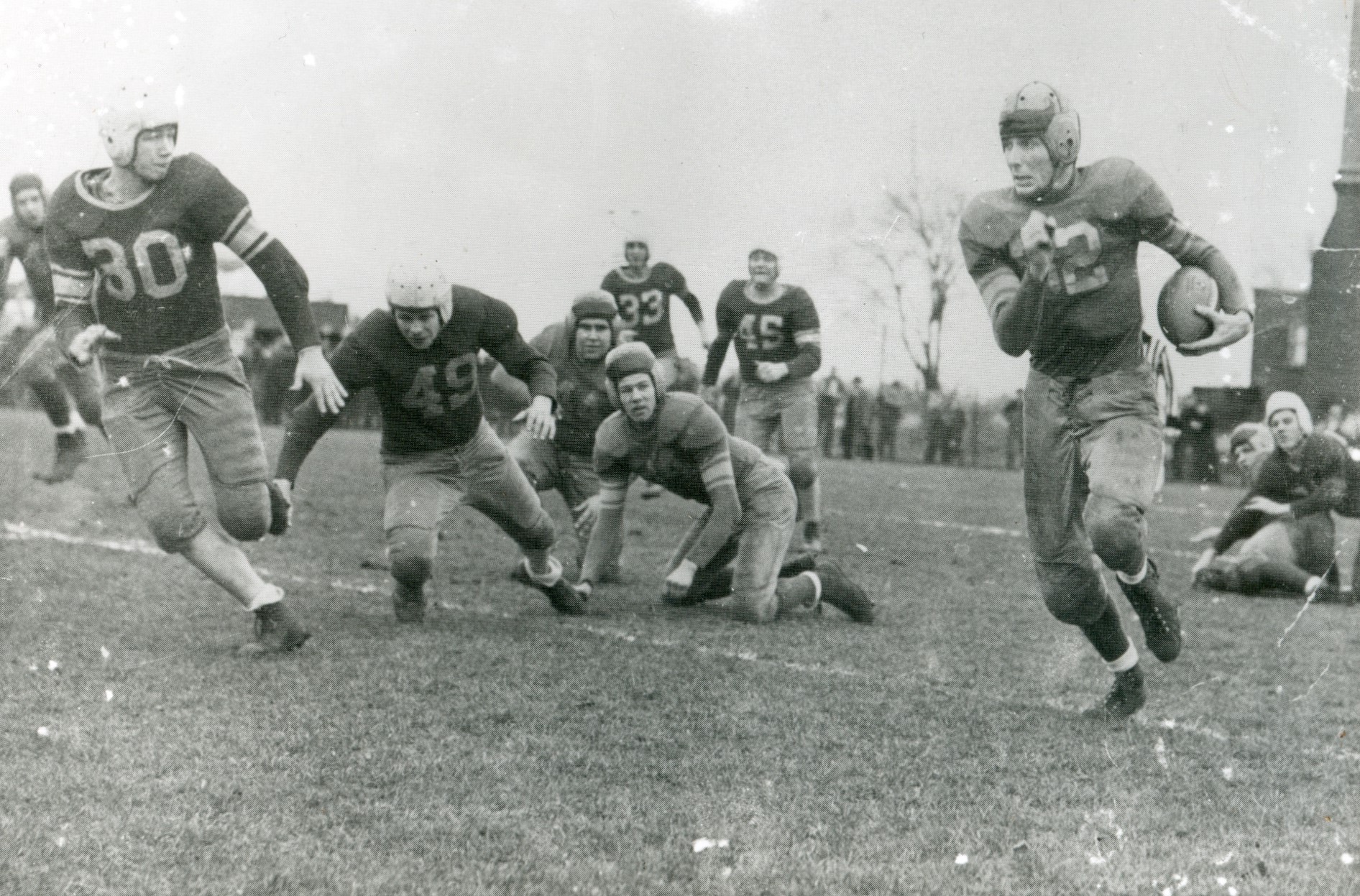
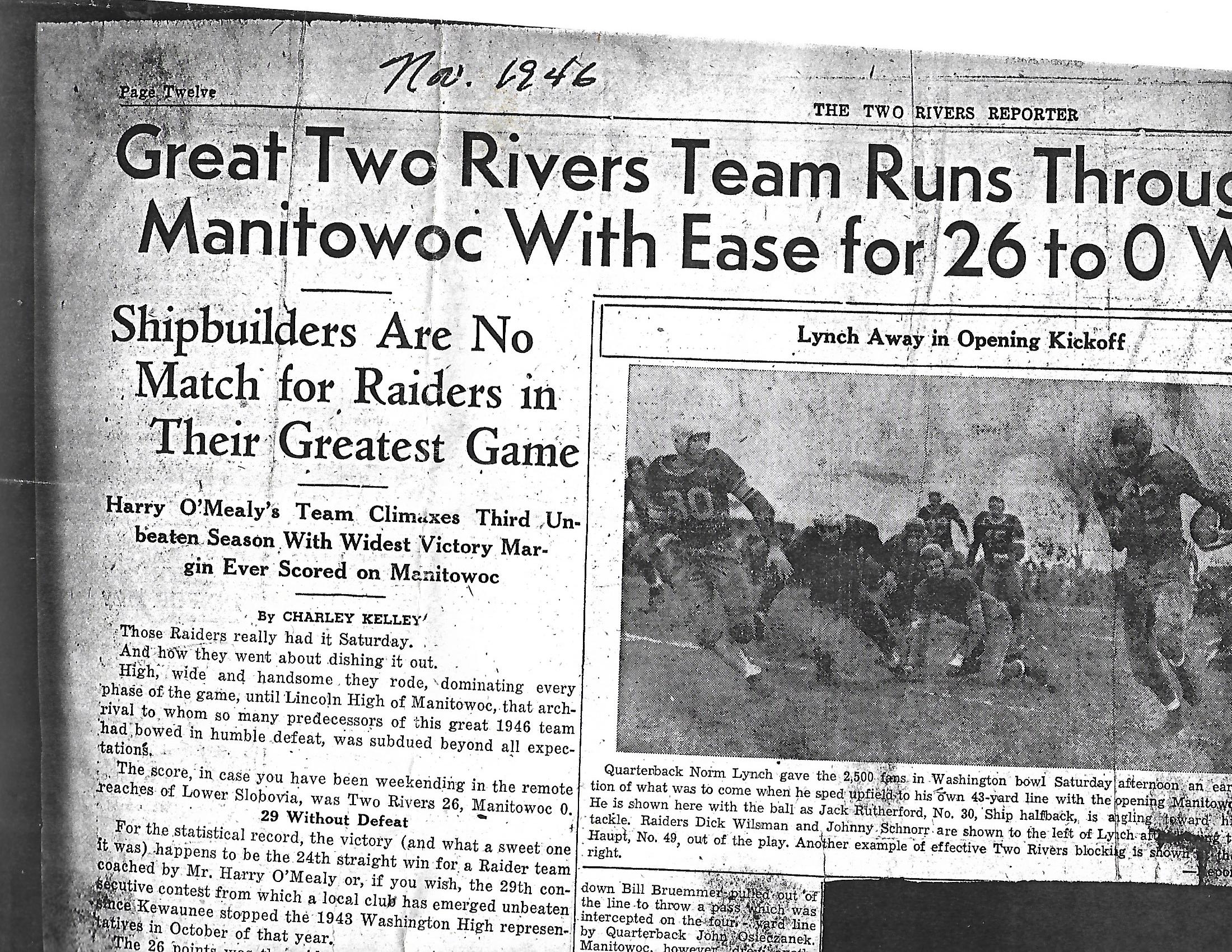
I love O’Mealy’s philosophy, “It’s never too late” (to win a game), even if mathematically there comes a time. Still, with onside kicks, and sideline passes etc., great teams and quarterbacks can make it seem like they’re bending the arc of time towards improbable victory. That stirs the souls of faithful, hanging onto the chance for a great comeback win.
At top is a print of a well-known Two Rivers Reporter action photo that ran (lower) as the featured photo in the news story of the team’s final 1946 game against arch-rival Manitowoc. Norm Lynch, an up back on the return team, returns the opening kick-off for a big gain, but he was tackled by Shipbuilder No 30 downfield.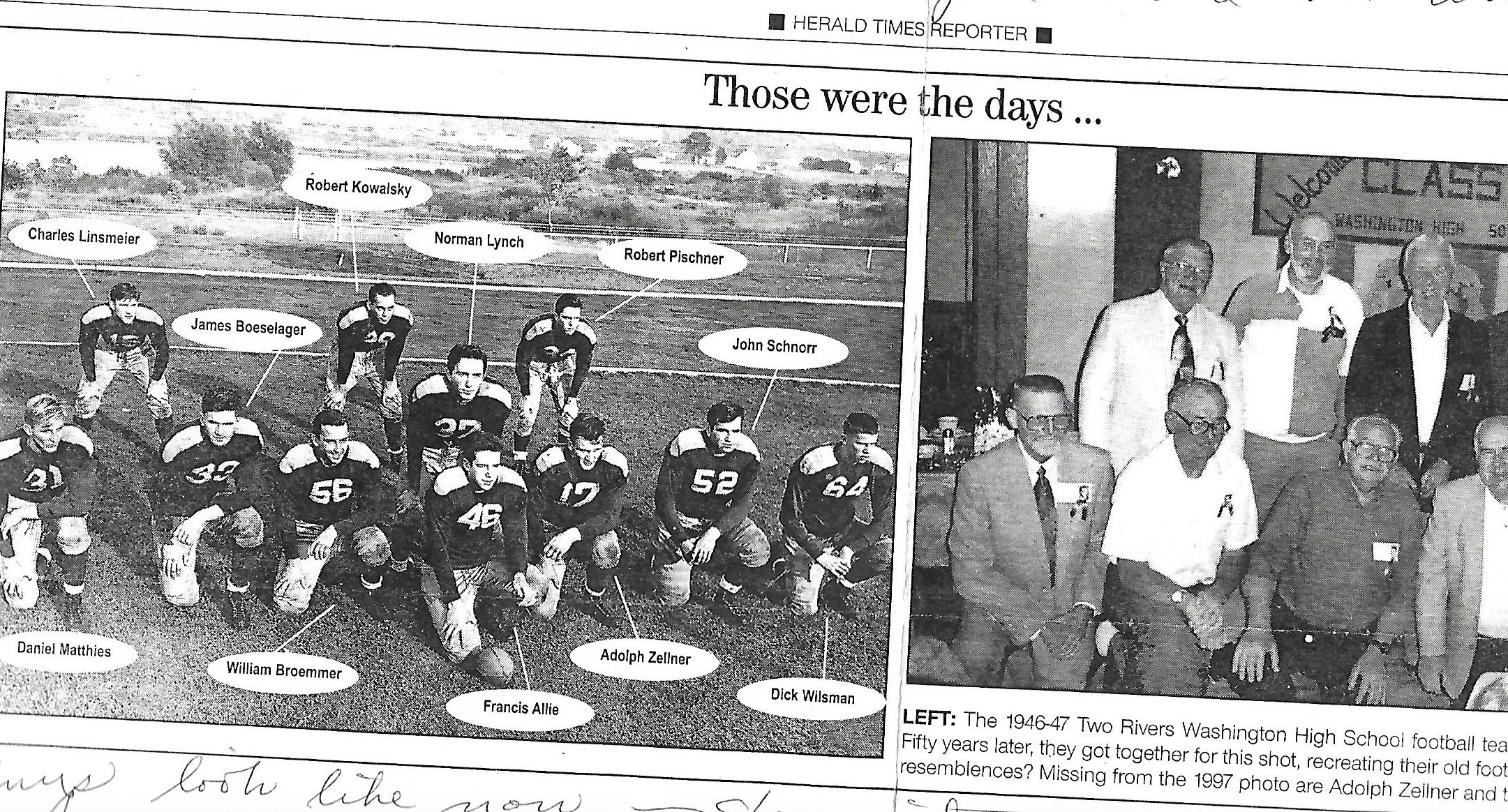
Pictured above is the starting offensive lineup for the Two Rivers Raiders of Washington High in 1946. The team went undefeated for three consecutive seasons from 1943 to 1946. My father, Norman Lynch, is the quarterback (32) behind center and in front of the T-formation of three running backs. The second partial photo is of a 50-year team reunion, posing in the same configuration. Norm Lynch is the guy in the dark sport coat.
There was no playoff system to determine a state championship for Division 3 high school football in 1947, but this team would’ve been a prime contender. The Washington High Raiders of 1980 did win their division’s state championship.

This page from my father’s yearbook (above) documents the scores for the 1946-47 year, including the season-opening 40-0 blowout of Pius XI, one of the state’s biggest private schools. The Pius players were also physically much bigger than the Raiders. Note also the remarkable disparity of total season points between Two Rivers and its opponents (260-39). The Raiders specialized in head-spinning plays to deceive the defense, including their version of the fabled “Statue of Liberty” play which required precise timing and execution. The team’s brilliant, innovative head coach and play-caller Harry O’Mealy (standing at left in photo at right) is pictured with his assistant coach. O’Mealy signed his quarterback Norm Lynch’s yearbook there, with the inscription: “Get that pitching arm in shape for St. Nobert’s next fall. Harry O’Mealy.”
Curiously, my father went to St. Norbert’s College on a football scholarship but did not pursue football in college. Why, he never really explained, though I think he was already thinking about marriage and a family with his betrothed, Sharon Jann. In his junior year, they moved to Milwaukee when he transferred to Marquette University, where he received his bachelor’s degree. I was born a short time afterward.
So part of my little quest was to visit the football field where the photo of my father ‘s kick return took place. Though the high school is now in suburban Two Rivers, the original football field is still there, though the goal posts are long gone. It’s very spacious, far bigger than a single football field.
In fact, during the 1930s and 1940s, the original Washington High’s facilities were used for summer training by a number of professional football teams, including the Philadelphia Eagles in 1941 and 1942.
Sadly the glorious field’s fall season has now been taken over by a loose-knit “team” we might call The Two Rivers Honkers, who line up in several directions at once, as the photo of me below shows. The Honkers specialize in the “double-wing formation,” but are especially skilled at leaving lumpy “yard markers” in the grass, which one now encounters at least every yard or so. The field is right beside the East Twin River, as you can see the street bridge at the right.
But all I could do was invoke an old expletive from a Marquette High Jesuit:
“Cripes Mini-Manure!!”
For all the forsaken past, I summoned the spirit to pose in a football runner’s manner, following in the old man’s footsteps, to recalled to glorious days of yore (below).

Photos above and below by Ann Peterson.
Other photos by Kevin Lynch, unless otherwise indicated.
________
1. Birthplace of the ice cream sundae: https://www.roadsideamerica.com/story/11967
Like this:
Like Loading...

:format(jpeg):mode_rgb():quality(40)/discogs-images/R-4875105-1468398205-6093.gif.jpg)





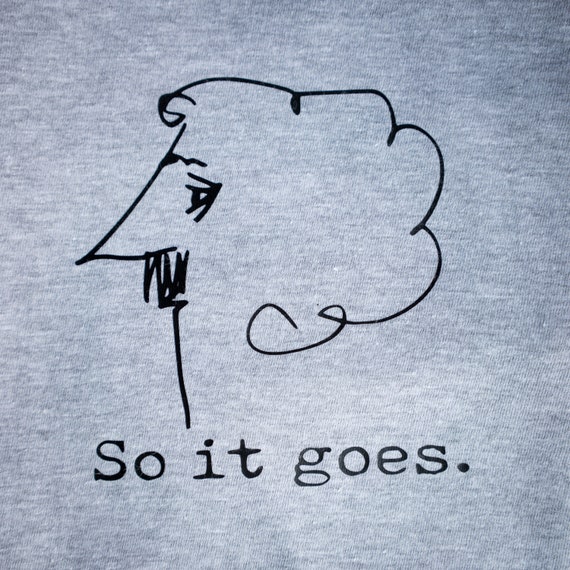

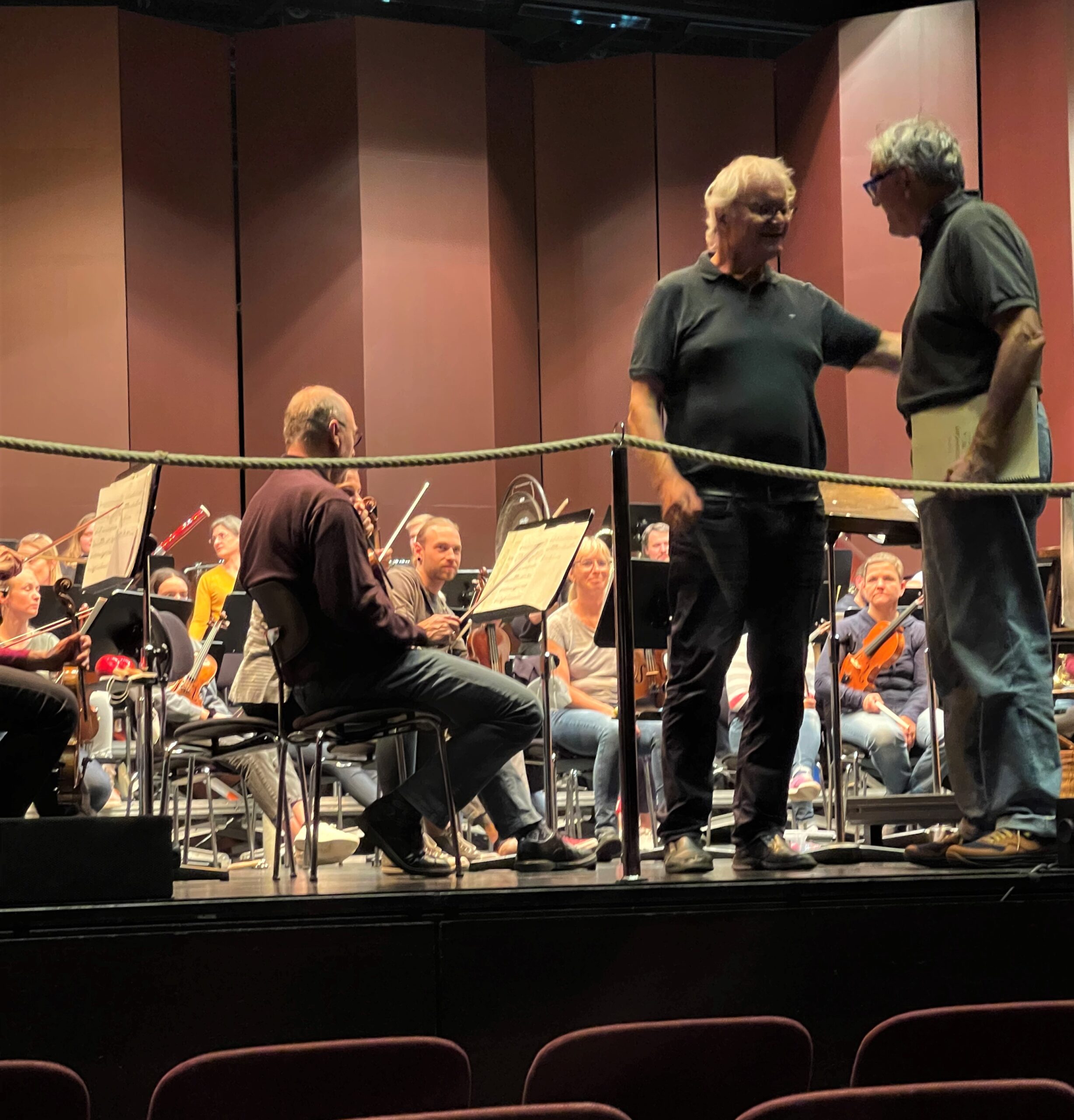


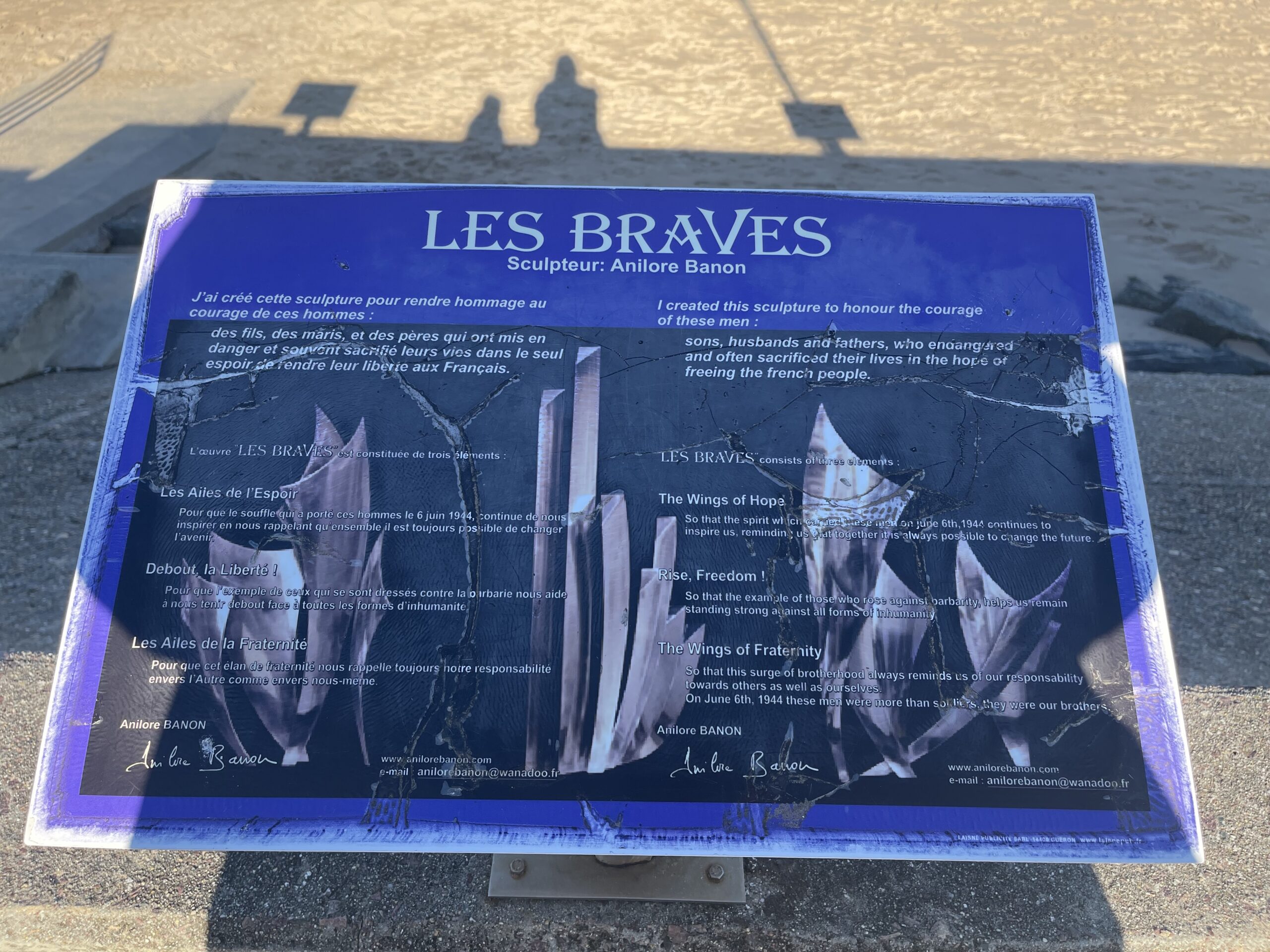
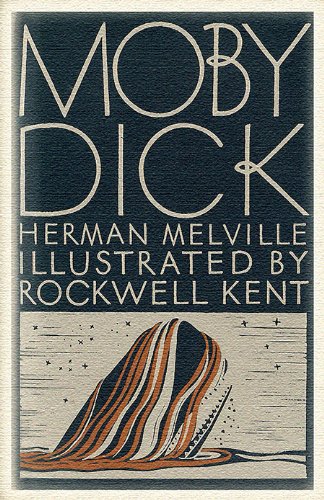



 John Coltrane “Live at Birdland.” Courtesy deep groove mono
John Coltrane “Live at Birdland.” Courtesy deep groove mono